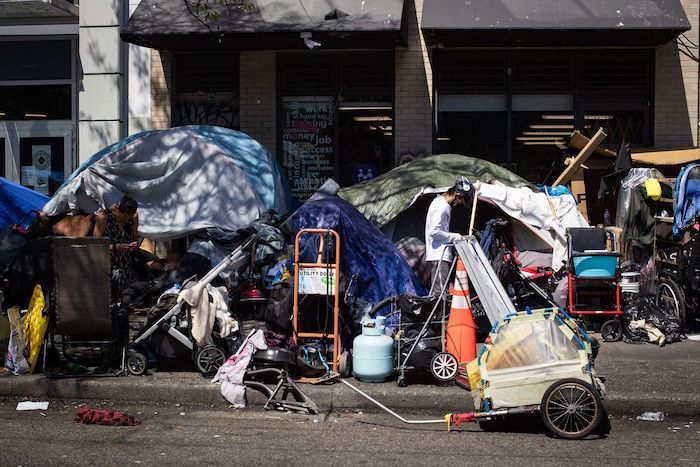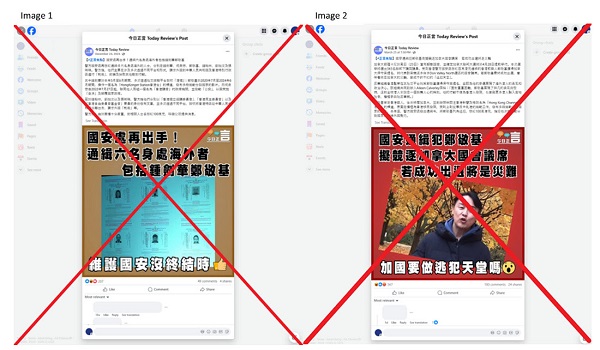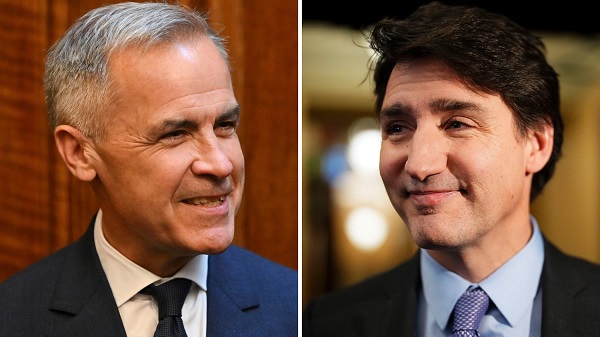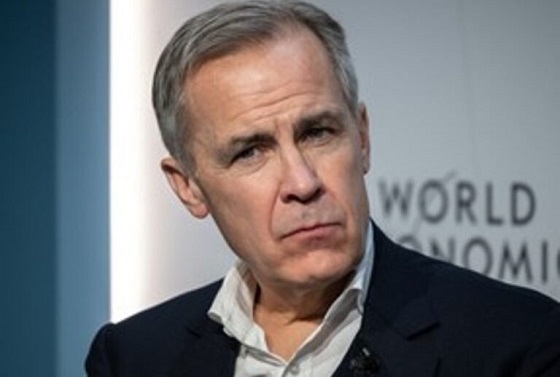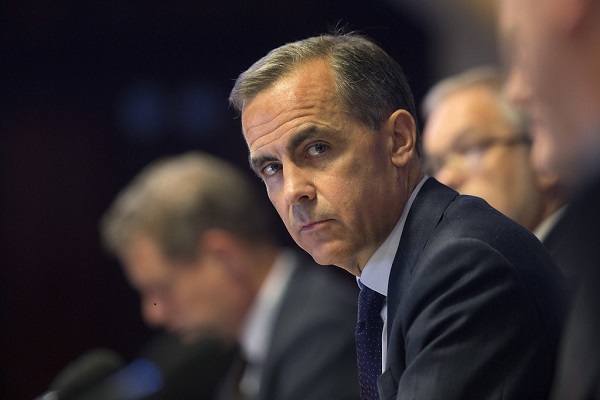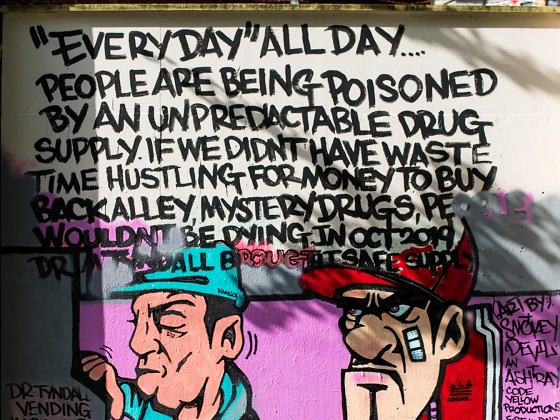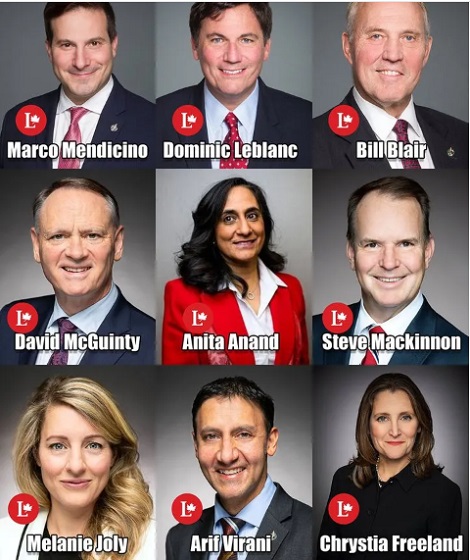Education
Rethinking Public Education
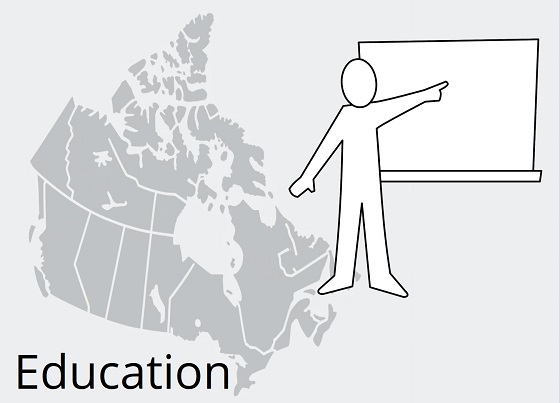
From The Audit
Holding public officials and institutions accountable using data-driven investigative journalism
What should public education accomplish?
On any given school day some six million Canadians between the ages of 5-18 are “locked up” – often against their will – inside K-12 schools. Approximately 2.5 percent of Canada’s gross domestic product is spent on public education. And, using Ontario as an example, that’ll cost more than $30 billion annually, or around 16 percent of the province’s budget.
Society invests heavily in education, and yet no one seems completely satisfied with the results. When was the last time you met an adult of any political stripe who didn’t have an opinion about what’s wrong with schools these days?
This piece was inspired by a comment to my recent Ranking Public Education Efficiency By Province post. That’s where I presented evidence suggesting increased funding would probably not solve the deep, systemic problems casting gloomy shadows up and down the halls of our ministries of education.
The Audit is a reader-supported publication. To receive new posts and support my work, consider becoming a free or paid subscriber.
So is there a better way to do public education? I honestly don’t know. But I do know that it’s unlikely we’ll ever find out if we don’t go back to the very beginning as ask some basic questions. And I also know that I haven’t seen most of these particular questions asked anywhere else:
What should public education accomplish?
How do you plan a trip if you don’t know where you want to go?
We can probably agree that all children should learn the skills they’ll need to live productive and successful lives as adults. And there’s not a lot of controversy in saying that those skills should include competence in reading, writing, and basic mathematics.
We can probably also agree that students should graduate with a healthy civic identity which would include comfort with, and loyalty to our cultural and legal heritage. However, things will get prickly when we try to define exactly what we mean by “identity” and “cultural”. Not to mention “heritage”. How do we decide whose definitions win?
Some will argue that schools should teach only skills and leave values out of the curriculum altogether. In other words, education should be culturally neutral. The biggest problem with that is that teachers aren’t neutral. Having taught high school for 20 years myself, I can tell you that, by design or by accident, a teacher enters the classroom as a complete and unsegmented person. And even the drowsiest, most distracted student senses it.
Some go a step further and advocate for teaching children the “critical thinking skills” they’ll need to make their own value judgments. Well that’s fine if you’re providing only the relevant epistemological, semantic, cognitive, and heuristic tools. But if your “critical thinking” curriculum includes even one values-based answer (see above for “unsegmented teachers”) then, by definition, you’re a propagandist.
What, exactly, is wrong with what we’ve already got?
There’s a lot here about which I simply don’t have enough clarity:
- I’ve read that grade inflation is allowing students to graduate without having mastered the content to which their transcripts attest. But I haven’t been able to find hard data to assess the claims.
- I’ve heard that employers are unsatisfied with the skills and work ethic of the young graduates applying for jobs. But how many employers? And how unsatisfied are they?
- As a (former?) IT system administrator, I’m well aware that large-scale technology adoptions in education environments were, historically, often the product of vendor hype, unreasonable expectations, and precious little serious research. And they often led to outrageous unintended consequences. But I’m no longer sufficiently plugged in to that world to have a sense of whether, on aggregate, technology is helping or harming children (or simply draining budgets).
- I’ve heard that at least some school boards appear to be dominated by extreme politically-driven ideologies. But how many boards are impacted? And how often do those ideologies find their way into classrooms?
- I’ve seen evidence that Ministry-level policy research is relying on poor and debunked scholarship. But has it made a difference with anyone involved with actual classroom teaching? (And how do you measure “debunked”?)
Should control over education policy be centralized?
Curriculum policy in Canada is generally set at the provincial ministry level and politely ignored everywhere else. I’ve already written about that in these pages. But, as discussed earlier, K-12 policy development costs us hundreds of millions of dollars each year across the country.
I’m not sure it’s even possible to impose detailed policy and curriculum guidelines. As a wise man once told me, you can tell them exactly what you want them to say but, with an arched eyebrow or a subtle voice inflection, experienced teachers communicate whatever message they want.
Now, considering how the system is currently funded, it makes perfect sense that elected officials at the provincial level should determine education policy. What makes somewhat less sense is that the policy researchers they hire appear to invest a great deal of energy resisting government “interference” and also refuse to share their research with the public who paid for it.
But, in theory at least, is the current system ideal?
Let me take a step back. What exactly is an education expert whose opinions qualify as authoritative? The issue is complicated by the many popular pedagogical theories that have come and (in some cases) gone over the decades. Those include constructivism, behaviorism, social learning theory, cognitive load theory, multiple intelligences theory, experiential learning theory, connectivism, situated learning theory, Bloom’s taxonomy, and humanistic education.
However I don’t believe that any single one of those – or even a combination – has ever achieved any kind of lasting consensus as they they cycle in and out of popularity. Nor can it be claimed that the policies set by whoever the credentialed experts happen to be have led to consistently satisfying results.
That is certainly not to suggest that the experts’ guidance hasn’t delivered successes over the years, or that they don’t bring value to the table. But, after more than a century’s worth of experiments with centralized educational control, it might be time to try something else.
Are all teenagers best served by mandatory enrollment?
When we acknowledge that no two children have identical needs and potential, it means that we have to be ready to treat them differently. And that’ll involve more than sending some kids to room 310 for their 10:30 class and others to room 315 across the hall. Isn’t it reasonable to wonder whether some teenagers can learn more and transition faster to responsible adult life outside educational frameworks?
Perhaps some truancy and child labour laws need updating.
Do vested interests stand in the way of positive change?
I honestly don’t know enough to have solid opinions on these questions, but they must be asked:
- Are teachers colleges politicized?
- Do the incentives driving powerful teachers unions conflict with students’ needs?
- Are sharply competing visions within ministries of education paralyzing the system (and wasting resources)?
- Should parent-advocates be allowed to interfere with educational professionals doing their work?
- Can every ministry job category still justify its costs – in both budget and institutional friction?
The inexorable inertia of incumbency is also a key player in this story.
What could replace the current model?
Some of the conflicts describe above come down to opposing worldviews. Are you a top-down governance type in whose eyes only “the authorities” have the knowledge and power to manage the lives of their subjects? Or do you see government as the servant of the people, existing only to fill in for the individual when faced with tasks requiring collective action? The worldview checkbox you tick will probably influence the kinds of alternatives you find yourself visualizing.
However, preconceptions shouldn’t be our only consideration. If there’s anything practical you could take away from this post, it’s that we need more serious research. Sure, I know there are good people out there thinking deeply about education policy. I’m far from the first person asking some of those questions.
But I haven’t yet come across any holistic discussion that starts from first principles and, in those terms, seeks to understand exactly what we’ve got and what we’re missing. And it’s only with that knowledge could we hope to build something genuinely new.
Happy 2024-2025 school year!
For a free subscription to The Audit. For the full experience, upgrade your subscription.
Autism
Autism Rates Reach Unprecedented Highs: 1 in 12 Boys at Age 4 in California, 1 in 31 Nationally
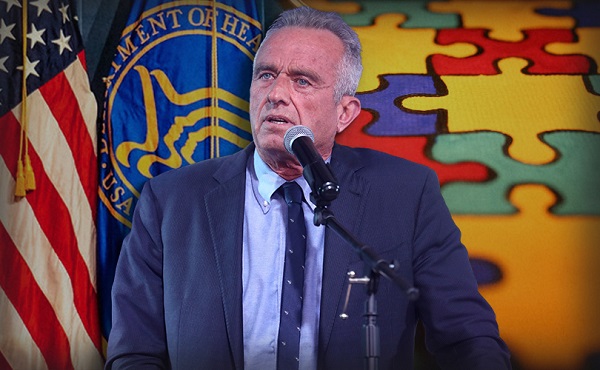
 Popular Rationalism
Popular Rationalism
 James Lyons-Weiler
James Lyons-Weiler
The U.S. Centers for Disease Control and Prevention (CDC) has released its 2025 report from the Autism and Developmental Disabilities Monitoring (ADDM) Network, and the findings are alarming: autism spectrum disorder (ASD) now affects 1 in 31 American 8-year-olds—the highest rate ever recorded.
For boys, the numbers are even more staggering: 1 in 20 nationwide, and 1 in 12.5 in California. The report, which tracks children born in 2014, reveals a crisis growing in severity and complexity, yet broadly unacknowledged in the national discourse.
Autism has become a public health crisis of urgent concern,” the report states plainly. And yet, government agencies have offered no new national action plan, and media coverage remains anemic.
Rapidly Accelerating Trends
In just two years, autism prevalence among 8-year-olds rose 17%, from 1 in 36 to 1 in 31. This is not an anomaly. Since the CDC began tracking autism in children born in 1992, prevalence has increased nearly fivefold, defying theories that attribute the rise solely to broader diagnostic criteria or increased awareness.
The Impact of SB277 on Autism Prevalence in California
In 2015, California enacted Senate Bill 277 (SB277), which went into effect on July 1, 2016. This legislation eliminated the state’s personal belief exemption (PBE) for childhood vaccinations, making it one of only three U.S. states at the time—alongside Mississippi and West Virginia—to require full compliance with the CDC-recommended vaccine schedule for school entry, except in cases of formally approved medical exemption.
While the primary intent of SB277 was to increase vaccination rates and try to reduce outbreaks of communicable diseases like measles, its implementation has coincided with a continued—and arguably accelerated—rise in autism spectrum disorder (ASD) diagnoses in the state. Data drawn from the California Department of Developmental Services (CDDS) and CDC’s Autism and Developmental Disabilities Monitoring (ADDM) Network offer a timeline of prevalence rates before and after the law’s enactment:
Between 2014 and 2017, ASD prevalence among young children in California increased from 0.86% to 1.18%—a 37.2% increase in just three years. By 2020, according to CDC ADDM surveillance, 4.5% of 8-year-olds in California had an autism diagnosis—the highest prevalence among all U.S. monitoring sites.
Percent Increase Post-SB277 (2016 to 2020):
From 1.08% (2016) to 4.5% (2020) = 316.7% increase
This dramatic rise cannot be definitively attributed to SB277 alone, but its temporal proximity to the policy change—which effectively compelled full vaccine schedule compliance across all demographic groups—raises serious questions. Notably, this increase occurred within California’s already robust autism tracking infrastructure (CDDS), known for conservative case identification that focuses on children with moderate to severe impairment requiring lifelong services.
While correlation does not imply causation, the magnitude and timing of California’s autism surge post-SB277 should compel further independent investigation, particularly given that:
- SB277 removed opt-out options for thousands of previously unvaccinated or selectively vaccinated children;
- The increase is most visible in 4-year-old cohorts tracked soon after the law took effect;
- California’s autism rates now exceed 1 in 12 for boys.
In light of these findings, California may now serve not only as a terrible national model for vaccine compliance—but also as a bellwether for unintended consequences of compulsory public health policy.
Alarming Trends in IQ
Contrary to such assumption of ASD leading to giftedness, the ADDM data also show that the proportion of children with higher IQs is actually decreasing, while the share of children with intellectual disability (IQ ≤ 70) has risen. Nearly 2 out of 3 children (64%) diagnosed with autism in this cohort fall below the IQ 85 threshold, indicating moderate to severe impairment.
These are hard realities that many will find unacceptable. Still, nationally, nearly 40% (39.6%) of 8-year-olds with ASD had IQ ≤ 70. Another 24.2% had borderline IQ (71–85). 36.1% had IQ > 85.
Since autism has a motor neuron impairment, demonstrated IQ may be an inexact measure of actual intelligence, as Spellers The Movie has taught the world.
From a clinical viewpoint, the ADDM report’s data quietly demolish the idea that autism incidence increases are driven by mild or high-functioning cases. Since the early 2000s, the proportion of cases with average or high IQ has dropped, while those with intellectual disability have surged. This trend—now reaching nearly 64%—indicates that autism’s rise is not a matter of greater sensitivity in diagnosis. Rather, it appears we are witnessing a real increase in biologically significant, disabling neurodevelopmental injury.
Reversal of Historic Ethnodemographic Trends
The report presents data on racial disparity that now represents a reversal:
Asian/Pacific Islander (3.75%), Black (3.63%), Hispanic (3.58%), and Multiracial (3.27%) 8-year-olds are now more likely to be identified with autism than White children (2.77%)
This is a complete reversal of pre-2018 trends, where White children had the highest identification rates. Children from low-income neighborhoods had higher prevalence of ASD than those from high-income areas in several states, e.g., Utah and Wisconsin
The California Signal: A Harbinger of What’s to Come?
San Diego, California, stands out as a sentinel site—and a warning. According to Supplementary Table 8 of the report, 8.87% of 4-year-old boys in California are diagnosed with autism. Further breakdown shows even more troubling disparities:
- Black boys: ~12%
- Hispanic boys: ~10.5%
- Asian boys: ~9%
- White boys: ~5.3%
These numbers imply that 1 in 8 to 1 in 10 young boys of color in California may carry an autism diagnosis by the time they reach second grade.
Are Environmental Triggers Driving This?
One overlooked possibility is that cumulative exposures—including the full CDC childhood vaccine schedule, lockdown-era developmental disruption, and coexisting toxicants—may act in concert to dysregulate immune and neurological development. California’s 2016 vaccine mandate removed all non-medical exemptions, making full compliance unavoidable for most working families. This timing intersects directly with birth years showing the steepest autism rises. If these policy changes are contributing, even partly, to this epidemiological shift, they demand urgent investigation—not blind defense.
The demographic disparities further reinforce the environmental hypothesis. Among 4-year-olds, autism rates among children of color now exceed those of White children by 40–90%, depending on the group and region.
Public Health Policies Under Scrutiny
Importantly, California’s strict mandate—which bars children from school or daycare without full vaccination—creates a uniquely high-exposure environment for children whose families cannot afford alternatives. These children are also more likely to be Black or Hispanic, compounding the already sharp disparities now seen in ASD prevalence. In San Diego’s 2018 birth cohort, over 1 in 10 Black and Hispanic boys have an autism diagnosis at age four. The notion that this simply reflects “better identification” strains all credibility.
Additionally, pandemic-era lockdowns, prolonged school closures, and extended masking requirements in California may have played a compounding role in disrupting normal developmental pathways for toddlers and young children during formative years.
The Cost of Inaction
The fiscal and societal burden of autism is already astronomical. A 2020 economic model projected U.S. autism-related costs could exceed $5.5 trillion per year by 2060 if trends continue unmitigated. That estimate did not anticipate the rapid acceleration seen in this latest data.
Your tax dollars have funded years of futile autism genetics research that has not led to any prevention, mitation or treatment, and any given individual genes from genome-wide association studies (GWAS) still explain only a sliver of ASD heritability. Meanwhile, evidence continues to build around plausible environmental and iatrogenic mechanisms—oxidative stress, mitochondrial dysfunction, and aluminum adjuvants, among others—without serious investment in confirming or ruling them out. If the CDC were tracking causation with the same rigor it tracks prevalence, we might already have answers.
A Turning Point?
Public health leadership now faces a choice: double down on statistical obfuscation, or finally confront the rising tide of childhood neurological injury. The tools exist—retrospective cohort comparisons, machine learning to detect risk patterns, causal inference modeling of environmental exposures, and most critically, honest, open-ended research. The CDC and NIH must stop chasing only genetic ghosts and start investigating the real, tangible environmental shifts that mirror this crisis in time.
For decades, the CDC, NIH, and IOM have promoted the idea that the rise in autism is primarily diagnostic, while excluding or downplaying environmental and iatrogenic hypotheses. But the current data—showing accelerating prevalence, worsening severity, and growing racial disparities—make this position untenable. It is now clear that narrative closure, not causal closure, has been guiding public messaging. The refusal to explore vaccine adjuvants, prenatal toxic exposures, chronic immune activation, and regulatory policy failures reflects a broken system more committed to preserving public confidence than discovering the truth.
In a striking statement during an April 2025 Cabinet meeting, Secretary of Health and Human Services Robert F. Kennedy Jr. declared,
“By September, we will know what has caused the autism epidemic and we’ll be able to eliminate those exposures.”
The promise represents a historic shift in federal tone—marking the first time in decades that a sitting health official has committed to openly investigating all plausible causes of autism, including environmental and iatrogenic exposures.
Popular Rationalism is a reader-supported publication.
To receive new posts and support my work, consider becoming a free or paid subscriber.
Education
Schools should focus on falling math and reading skills—not environmental activism

From the Fraser Institute
In 2019 Toronto District School Board (TDSB) trustees passed a “climate emergency” resolution and promised to develop a climate action plan. Not only does the TDSB now have an entire department in their central office focused on this goal, but it also publishes an annual climate action report.
Imagine you were to ask a random group of Canadian parents to describe the primary mission of schools. Most parents would say something along the lines of ensuring that all students learn basic academic skills such as reading, writing and mathematics.
Fewer parents are likely to say that schools should focus on reducing their environmental footprints, push students to engage in environmental activism, or lobby for Canada to meet the 2016 Paris Agreement’s emission-reduction targets.
And yet, plenty of school boards across Canada are doing exactly that. For example, the Seven Oaks School Division in Winnipeg is currently conducting a comprehensive audit of its environmental footprint and intends to develop a climate action plan to reduce its footprint. Not only does Seven Oaks have a senior administrator assigned to this responsibility, but each of its 28 schools has a designated climate action leader.
Other school boards have gone even further. In 2019 Toronto District School Board (TDSB) trustees passed a “climate emergency” resolution and promised to develop a climate action plan. Not only does the TDSB now have an entire department in their central office focused on this goal, but it also publishes an annual climate action report. The most recent report is 58 pages long and covers everything from promoting electric school buses to encouraging schools to gain EcoSchools certification.
Not to be outdone, the Vancouver School District (VSD) recently published its Environmental Sustainability Plan, which highlights the many green initiatives in its schools. This plan states that the VSD should be the “greenest, most sustainable school district in North America.”
Some trustees want to go even further. Earlier this year, the British Columbia School Trustees Association released its Climate Action Working Group report that calls on all B.C. school districts to “prioritize climate change mitigation and adopt sustainable, impactful strategies.” It also says that taking climate action must be a “core part” of school board governance in every one of these districts.
Apparently, many trustees and school board administrators think that engaging in climate action is more important than providing students with a solid academic education. This is an unfortunate example of misplaced priorities.
There’s an old saying that when everything is a priority, nothing is a priority. Organizations have finite resources and can only do a limited number of things. When schools focus on carbon footprint audits, climate action plans and EcoSchools certification, they invariably spend less time on the nuts and bolts of academic instruction.
This might be less of a concern if the academic basics were already understood by students. But they aren’t. According to the most recent data from the Programme for International Student Assessment (PISA), the math skills of Ontario students declined by the equivalent of nearly two grade levels over the last 20 years while reading skills went down by about half a grade level. The downward trajectory was even sharper in B.C., with a more than two grade level decline in math skills and a full grade level decline in reading skills.
If any school board wants to declare an emergency, it should declare an academic emergency and then take concrete steps to rectify it. The core mandate of school boards must be the education of their students.
For starters, school boards should promote instructional methods that improve student academic achievement. This includes using phonics to teach reading, requiring all students to memorize basic math facts such as the times table, and encouraging teachers to immerse students in a knowledge-rich learning environment.
School boards should also crack down on student violence and enforce strict behaviour codes. Instead of kicking police officers out of schools for ideological reasons, school boards should establish productive partnerships with the police. No significant learning will take place in a school where students and teachers are unsafe.
Obviously, there’s nothing wrong with school boards ensuring that their buildings are energy efficient or teachers encouraging students to take care of the environment. The problem arises when trustees, administrators and teachers lose sight of their primary mission. In the end, schools should focus on academics, not environmental activism.
-
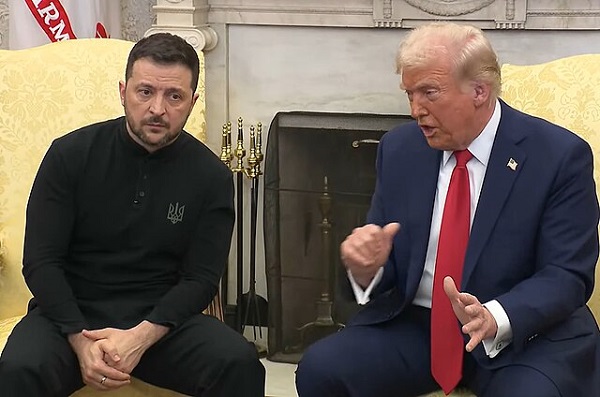
 conflict2 days ago
conflict2 days agoTrump tells Zelensky: Accept peace or risk ‘losing the whole country’
-

 2025 Federal Election1 day ago
2025 Federal Election1 day agoPoilievre Campaigning To Build A Canadian Economic Fortress
-

 Automotive1 day ago
Automotive1 day agoCanadians’ Interest in Buying an EV Falls for Third Year in a Row
-

 Alberta9 hours ago
Alberta9 hours agoGovernments in Alberta should spur homebuilding amid population explosion
-

 Entertainment2 days ago
Entertainment2 days agoPedro Pascal launches attack on J.K. Rowling over biological sex views
-

 International8 hours ago
International8 hours agoHistory in the making? Trump, Zelensky hold meeting about Ukraine war in Vatican ahead of Francis’ funeral
-

 Automotive2 days ago
Automotive2 days agoHyundai moves SUV production to U.S.
-
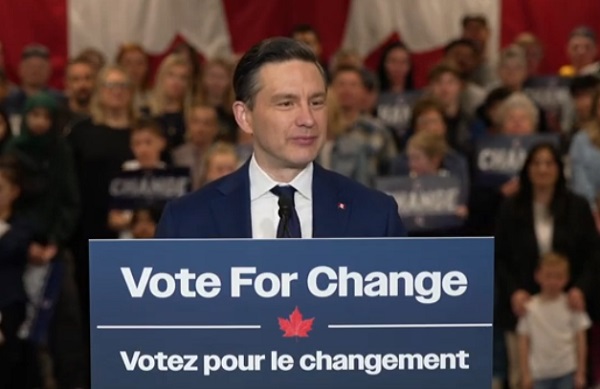
 2025 Federal Election1 day ago
2025 Federal Election1 day agoAs PM Poilievre would cancel summer holidays for MP’s so Ottawa can finally get back to work









